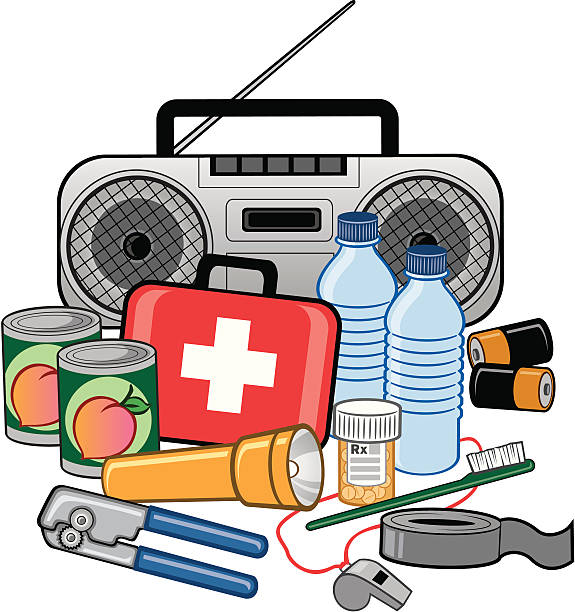
If you stay ready, you don’t have to get ready. Emergencies happen all the time, and by the very definition of “emergency”, you don’t know when one will occur.
Types of Emergencies
- Fires
- Unsafe air quality for days
- Heavy traffic towards certain directions due to road closures
- Earthquakes
- Hurricanes & flooding
- Heavy snowstorms
- Often there is “panic buying” before a big storm and grocery shelves are wiped-out
- Poor road conditions prevent some trucks from replenishing some grocery stores & fuel stations
- Electricity grid failing, resulting in blackouts
- Pandemics
- Civil unrest / riots in the street
Whatever the possibility, it’s prudent to hope for the best and prepare for the worst in the event it’s necessary to shelter in place or get out of dodge. Get ready now by spending time and money to prepare for the unexpected.
Unlike a Go Bag that is primary limited by its size and weight, home preparation offers some flexibility.
At minimum, consider having these basics in a designated place in your garage or shed. Ensure everyone in your household is aware of where to find these items and have enough supplies for each household member for 2 weeks.

Prepping: The “Basics”
- Water (1 gallon/ 3 liters per person, per day)
- Non-perishable food
- Emergency Food – 120 servings – 25 year shelf life
- Survival Tabs
- Oatmeal Packs
- Protein/ power bars
- Flashlight / Headlamp & extra batteries
- Battery-powered or hand-cranked Emergency Radio
- Trauma Kit and/or First Aid Kit
- Cash and change (in a waterproof container)
- Manual P-38 Can Opener
- Flares or whistle to signal for help
- N99 Mask for dusty or contaminated air
- Wrench, pliers and other tools (to turn off utilities)
- Plastic sheeting and duct tape to shelter-in-place
- Local maps
- Waterproof Power Bank with solar charging capability
- Moist towelettes, garbage bags and zip ties
- Anchor furniture like China cabinets & bookcases to the walls
- Review supplies & procedures 2x per year to ensure readiness

Prepping: The “Extras”
Once you’ve got the basics, personalize your extras based on the needs of your family (including pets) and the weather conditions where you live.
- Prescription & non-prescription meds (pain relievers, anti-diarrhea, etc.)
- Eyeglasses & contact lens solution
- Infant formula and supplies (diapers, wipes, etc.)
- Personal hygiene items (including toilet paper & paper towels)
- Soap & alcohol-based hand sanitizer
- Important documents & External Hard Drive in a waterproof container (copies of each household member’s ID, insurance policies, bank account records, family contact info, etc). Consider uploading to the cloud too.
- Sleeping bag or warm blanket for each person
- Complete change of clothes for each person
- Unscented household bleach & medicine dropper (bleach is an effective disinfectant and can also be used to treat drinking water)
- Extra food & water
- Extra blankets & Hand Warmers for extreme cold
- Matches & lighters in waterproof containers
- Candles
- Fire extinguisher
- Generator With Jumper Cables
- Emergency reference material
- Reliable transportation.
- Make a habit of not letting your gas tank dip below 50%.
- In the event you have to drive away, you don’t want to be one of the people stuck in a long line at the gas station.
- If you have a bike, ensure it’s in working order.
- Firewood & lighter fluid
- Pet food & supplies
- Life raft & life vests *if in an area with severe flooding

Key Takeaway
Don’t be caught off-guard like the folks in the picture above during the 2020 coronavirus outbreak. In the first weeks of the COVID-19 pandemic in early 2020, stores across the US were wiped-out of items including toilet paper, water bottles, beans, rice, eggs, and more. If you stay ready, you don’t have to get ready!
Affiliate Disclosure: As an Amazon Associate, I earn from qualifying purchases.
Enter your email in the “Subscribe” box to receive the latest Financial Thriving blog post.